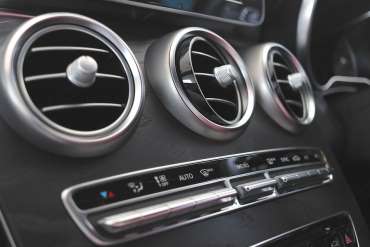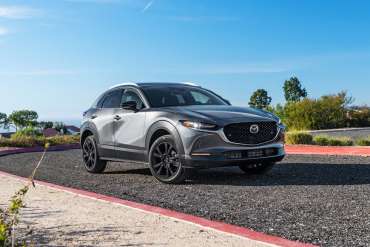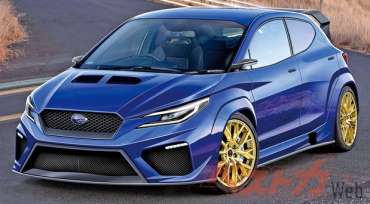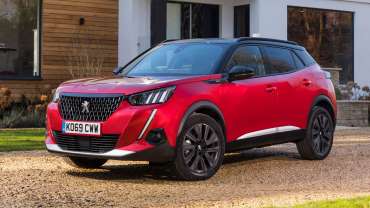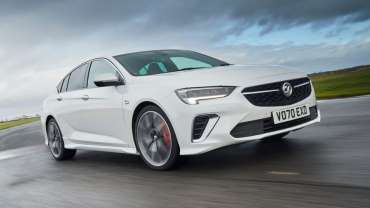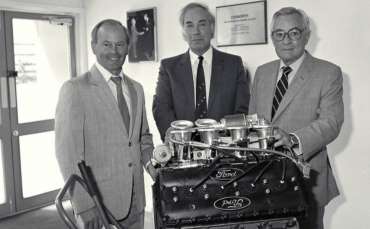
Worldcarblog.com
Here's how you can warm up your vehicle engine faster in winter!
When the heating is on, the fan uses coolant circulation to warm the vehicle!
Cold weather brings new habits, and one of the most important questions is what to do to warm up the car engine as soon as possible? Standing in a parking lot with the engine running is out of the question. Get going, and one of the tips is to turn off the heating for the first few minutes. Namely, when it is turned on, the fan uses the circulation of the coolant to heat the vehicle (through the so-called heat exchanger or heat exchanger). This lowers the coolant temperature and thus the engine needs more time to warm up.
If you want to warm up the engine faster and reduce fuel consumption, turn off the heating fan for a few minutes. You won’t lose much, because until the engine warms up, cold and lukewarm air is blowing for you anyway.
2021 Mazda CX-30 2.5 Turbo Boosts Its Engine Lineup
Mazda's upscale CX-30 subcompact crossover receives a welcome boost from a new 250-hp turbocharged engine.
Think of the Mazda CX-30 as a Mazda 3 hatchback on stilts. If you're picturing an upscale subcompact crossover, you're on the right track. Both vehicles are built on the same platform, have common design elements inside and out, and share their polished road manners. Drivers of the CX-30 sacrifice some handling responsiveness for its (slightly) taller seating position, but the connected feel from behind the CX-30's steering is class leading. Until now our only complaint centered around a lack of power since the CX-30 came with a merely adequate naturally aspirated 2.5-liter inline-four with 186 horsepower. Mazda is fixing that with a more powerful turbocharged engine in the new-for-2021 2.5 Turbo trim level.
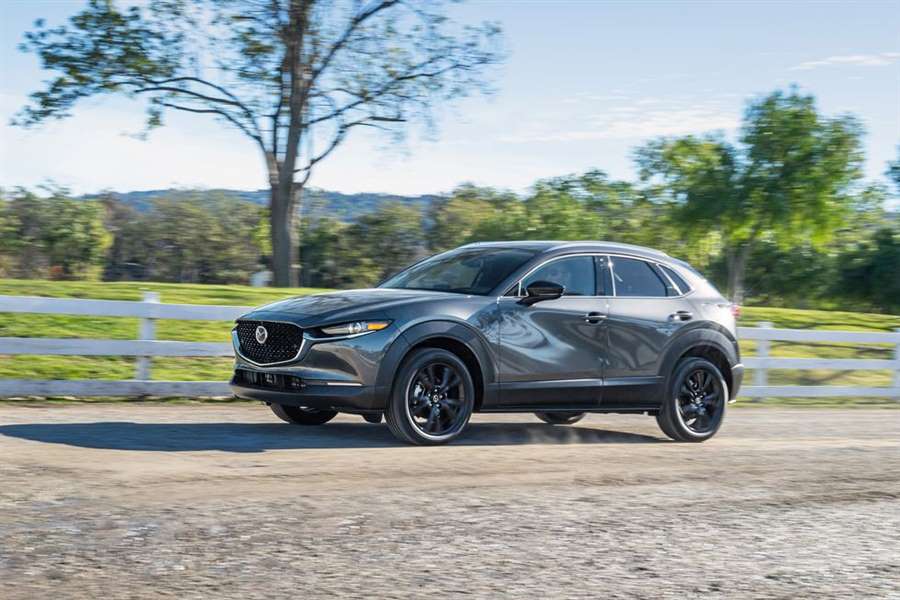
The CX-30's turbocharged 2.5-liter inline-four is already in every other new Mazda model save for the Miata and the tiny CX-3 crossover. On premium fuel, output is a stout 250 horsepower and 320 pound-feet of torque. Feed this turbo-four regular and its figures drop to 227 horses and 310 pound-feet, but those are still vast improvements over the standard 2.5-liter four in our long-term CX-30. The new engine and its associated hardware add about 120 pounds to the SUV's curb weight and contribute to a mere 1-mpg drop in its EPA combined fuel economy, 25 mpg versus 26 for a comparable model with the 2.5.
In our testing of the latest all-wheel-drive Mazda 3 sedan, the switch from the base engine to the turbo version dropped its zero-to-60-mph run from 7.3 to 5.6 seconds. We haven't tested the CX-30 Turbo yet, but we expect a similar improvement over the regular all-wheel-drive model's 7.6-second 60-mph time, so a time around six seconds. That acceleration would make it among the quickest, non-performance-oriented subcompact SUV available. BMW, Jaguar, Mercedes-AMG, and Mini all sell small, sporty crossovers with around 300 horsepower but charge a five-figure upcharge over the CX-30 Turbo's $31,225 starting price.
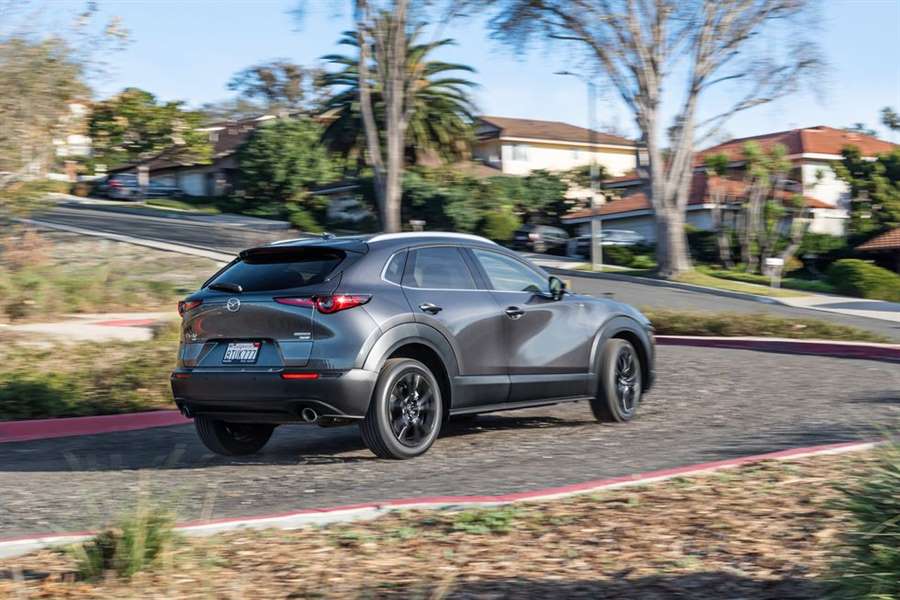
As in this turbo engine's other applications, it's backed by a smooth-shifting six-speed automatic transmission and Mazda's i-Activ all-wheel-drive system. Compared to the 3, the main difference here (and in other CX crossovers) is the addition of an off-road mode for stability-control and all-wheel-drive programming, which better distributes the engine's torque among the four wheels when traveling over slippery terrain. This doesn't make the CX-30 fit for serious trail work—Turbo models have only 8.0 inches of ground clearance and roll on 18-inch street-oriented all-season tires—but the off-pavement tuning should help it reach any secluded campsite that a Subaru Crosstrek can.
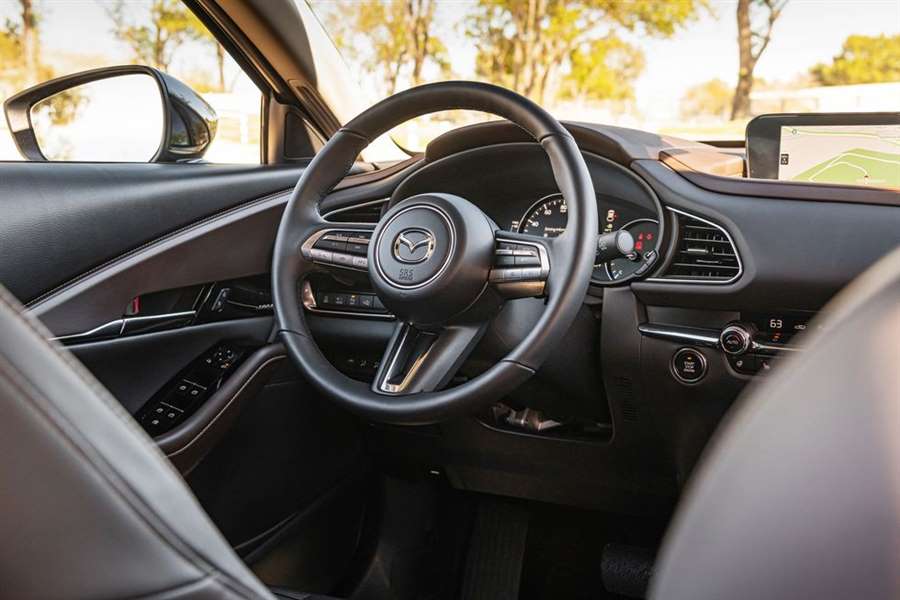
It's best to not think of the blown CX-30 as a hot rod. Mazda's turbo-four is all about the easy rush of torque and is happiest quietly grumbling along at low revs. All 310 pound-feet arrive at a mere 2500 rpm, and the big four tends to run out of steam by 5000 rpm. The six-speed transmission feels similarly sedate in its shifts unless you toggle its sport mode, which is smartly tuned to downshift and hold lower gears when cornering. Turning the CX-30's wheel off center reveals pleasantly linear responses and confidence-inspiring body control. This Mazda's sure-footedness at speed allows it to play along when spurred down a twisty road, but it's more comfortable to just cruise in its borderline luxury ambiance. If only a little less road noise seeped into its cabin at highway speeds. Ride comfort is generally compliant, although we did experience some unbecoming high-frequency jolts over some of Michigan's many potholes.
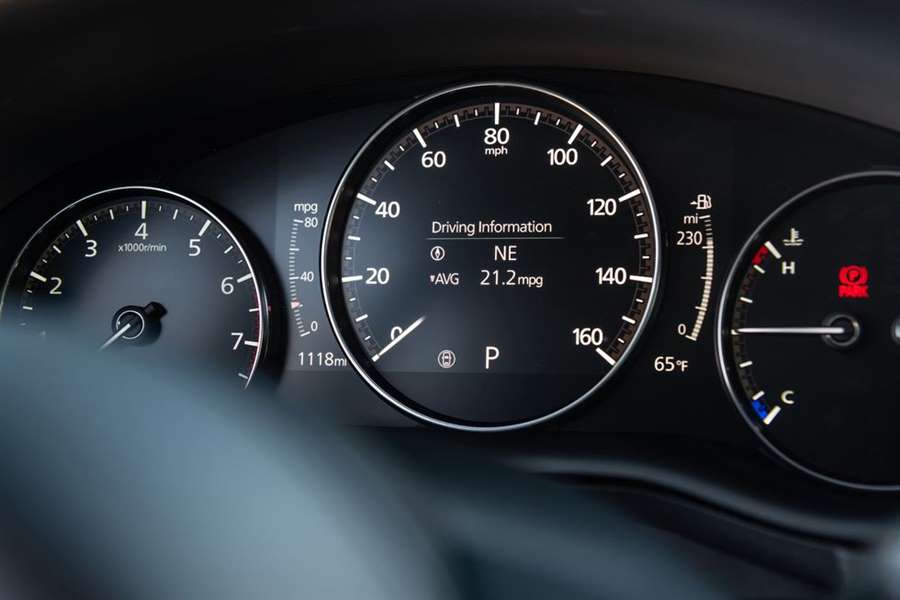
You can spot the CX-30 Turbo model by its black wheels and exterior mirrors, larger tailpipes, brushed-aluminum roof rails, and the discreet Turbo badge on its liftgate. Given this is only the CX-30's sophomore model year, not much has changed inside its finely tailored cabin. Supple leatherette upholstery is standard, as are a driver-focused control arrangement, a heated steering wheel and front seats, and Mazda's latest 8.8-inch infotainment system with a control knob on the center console. Although the CX-30's rear-seat passengers benefit from a touch more headroom than they would in the 3 hatchback, space in back is still tight for adults and the 20 cubic feet of cargo space is the same as a Mazda 3 hatch.
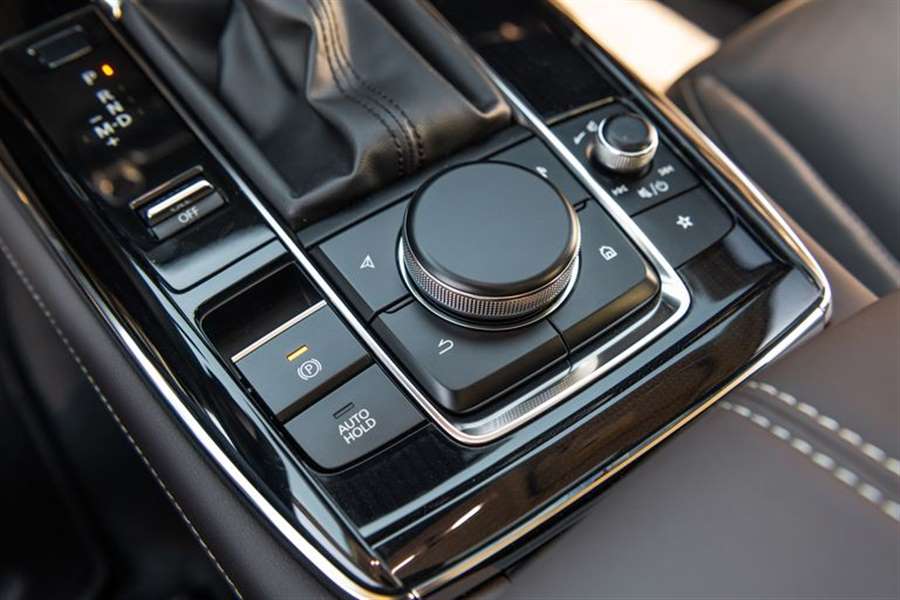
The fully loaded (and clumsily named) Turbo Premium Plus Package AWD version comes with features such as rear parking sensors, a higher-resolution 360-degree camera system, automatic reverse emergency braking with rear cross-traffic alert, and low-speed steering assistance for the adaptive cruise control. Along with a few accessory extras, these models flirt with $36,000. While the CX-30 Turbo's starting point equates to a small price advantage over a comparable Mazda 3 hatchback, the engine upgrade pushes the asking price precariously close to that of the 10Best-winning Mazda CX-5, which opens at $31,935 with the boosted 2.5-liter and is more accommodating of people and their stuff.
Source: caranddriver.com
The addition of the turbo-four in the CX-30 rounds out what is a compelling overall package for a small, almost-luxury SUV, which should strengthen its position as one of Mazda's top sellers. Everything being equal—which they pretty much are between the CX-30 and Mazda 3 hatchback—we still prefer the latter for its better driving dynamics and sleeker shape. But for those looking for a subcompact SUV, the turbocharged CX-30 should be at the top of your list.
Subaru is preparing a new hot hatch
Some media write that Subaru, in cooperation with Toyota, is preparing a hot hach model with 4x4 drive, with the possibility that the car could also serve as a base for a rally vehicle.
This project is reportedly run under the Super AWD label, while the premiere of the car should be in the fall of 2022.
Apparently, this will not only be a hatchback version of the new generation sports Subaru WRX (which is expected at the same time), but will be below it in the range of the Japanese brand (although these two models will be similar in size).
Both the new hot hatch and the future WRX should have a 2.4-liter turbo gasoline engine, noting that the hot hatch will have less power than the new WRX.
Peugeot 2008 video review: the stylish sophisticate
Peugeot’s all-new 2008 is reborn with more space, improved quality and some novel technology, to re-enter a small-SUV market more crowded than Hamleys toy store on Black Friday. The big news is a pure electric version with 193 miles of range, sold alongside the sole 101bhp diesel (expected to contribute just 5 per cent of sales) and a 1.2-litre petrol engine with three power outputs.
Set the scene – what’s new about this 2008?
It’s still a compact family five-door which rides higher than the similarly all-new Peugeot 208 supermini. But compared with its predecessor, this 2008 is much bigger. Overall length grows by 141mm to 4300mm, and the steel between the wheels now measures 2605, which means significantly more space in the cabin and there’s a bigger boot which can stow 434 litres of luggage.
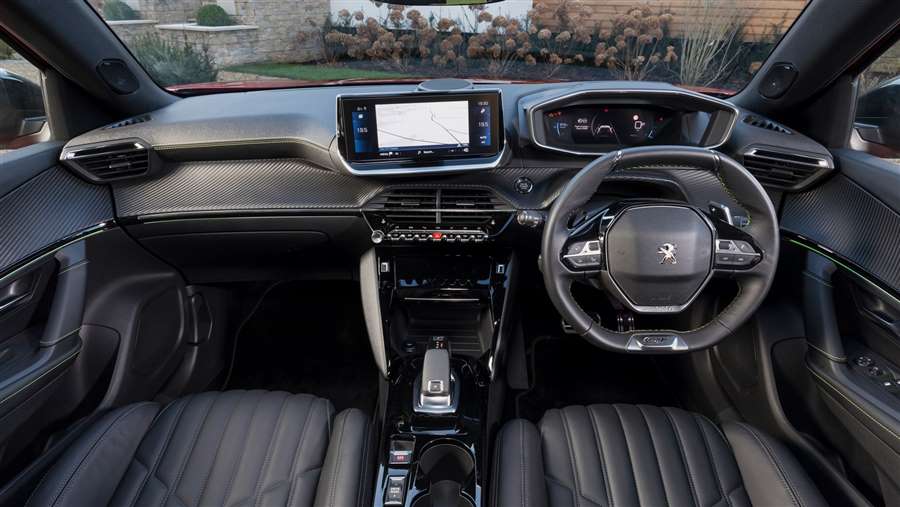
It also changes the vehicle’s proportions, pushing the wheels closer to the extremities and the windscreen slightly backwards. Peugeot’s design department opted for a proud, horizontal bonnet rather than the original 2008’s snub, droopy nose, which gives the new model the classical SUV look of Land Rover’s Defender or Jeep’s Wrangler. But there are heaps of modern design details too: a big grille with a patchwork of chrome or body-coloured inserts, triangular patterns in the bodysides and a swept-up shoulder line meeting a rear pillar accentuated with silkscreen stripes.
Inside the dashboard is adorned with high-quality carbon-effect concave trim, and Peugeot’s i-Cockpit cabin philosophy is evolved. That means a dinky steering wheel you have to drop into your lap so as not to obscure another big innovation, a stylish, digital 3D instrument binnacle (from the Allure second trim level up, starting at £22,350). Thankfully you can adjust the driver’s seat through a pronounced arc and move the wheel in-and-out, to get a decent position. Annoyingly, my bony backside found the GT Line seat’s faux-leather central strip a tad uncomfortable (akin to tight pants giving you a wedgie), though less ornate upholstery on another seat eliminated the lump.
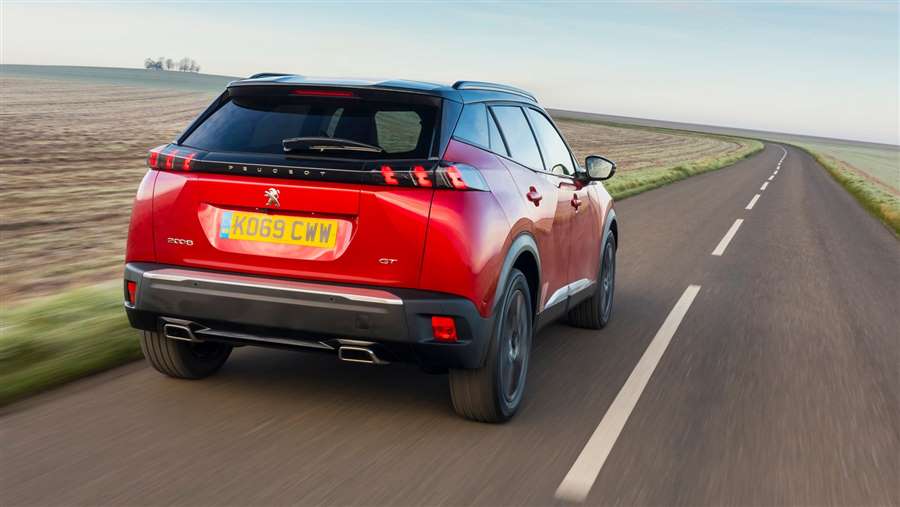
Too much information! What’s it like to drive?
The ride feels taut, with pronounced anti-roll measures keeping lean in check during cornering and a chassis that hugs the topography like a lycra catsuit. Body control is good, recovering its composure rapidly after a sharp deflection.
We tried the 1.2-litre petrol engine with both 17- and 18-inch wheels, and there’s a noticeable difference. The bigger diameter rims amplify every crest and dip in the road, and bumpy sections can be quite jarring as your hips shake and head tosses. Accelerating over sharp ridges can cause the front wheels to skip rather than remaining keyed into the surface.
This is also true of the 17-inch wheels, but less often. The ride remains tight but that underlying jagged edge melts away, leaving a set-up that keen drivers will appreciate. The steering adheres to the electric assisted norm: featherlight at manoeuvring speeds, deserving of more heft and urgency off the dead-ahead around town, then summoning a nice blend of weight and responsiveness for A-road carving and motorway cruises. The 2008 is one of the class’s more satisfying cars to drive.
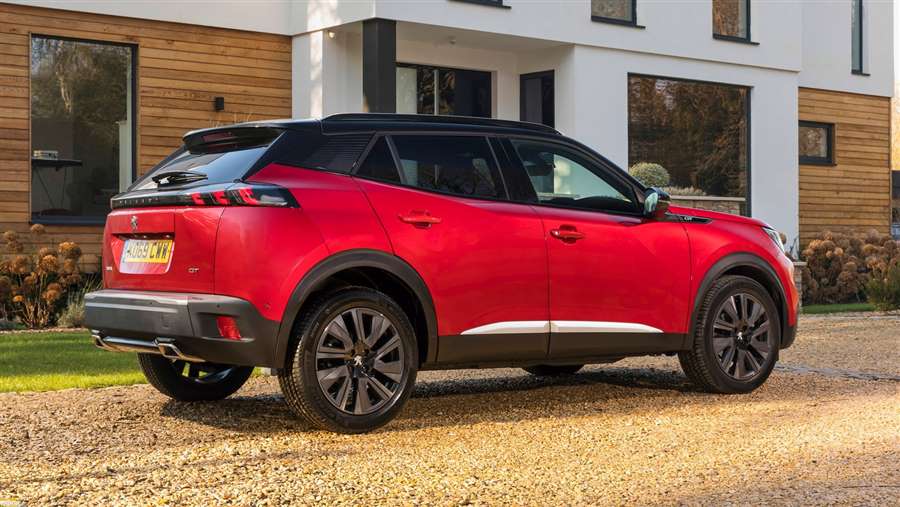
Want to know about the all-electric e-2008? Check out our review here. If not, keep reading our test of the combustion-engined 2008.
Does that chassis set-up compromise refinement?
Not at all, the 2008 is generally very civilised. The Michelin Primacy 4s, a bespoke blend for this Peugeot designed to suppress rolling resistance but prioritise wet braking, generate little road noise.
Expansion-joint-thumps sound so muted they appear to be coming from other cars, and the three-cylinder petrol engine’s charismatic fluttering is equally down in the mix. Only some wind whistle around the chunky side mirrors penetrates the 2008’s air of mature sophistication. At 80mph it’s so pronounced I wind back to 70mph and relish the improvement: that’s good for fuel economy and will reduce carbon emissions too.
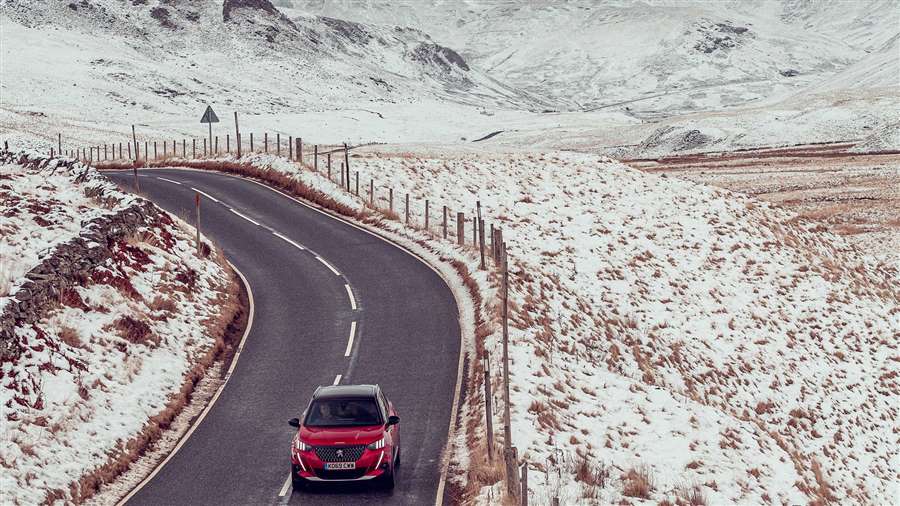
Peugeot quotes a range of 43.7–50.6mpg for the 129bhp, mid-ranking petrol engine (depending on spec and wheel size), and CO2 emissions between 102 and 109g/km. The threepot offers enough punch to occasionally fluster the front wheels, and a standstill to 62mph sprint in 8.9secs with the six-speed manual gearbox. That’s a negligible 0.2secs quicker than the eight-speed auto’s acceleration time, and you’ll be sacrificing smooth computer-controlled shifts for a less polished manual action: the oversized gearknob is baulky and the throw a bit long and indistinct.
Prices start at £21,150 for the base 99bhp 1.2-litre Active with analogue instruments, a 7-inch touchscreen, standard DAB radio, Mirror Screen smartphone connectivity and the handsome, concave carbon effect interior trim.
Find another £2200 for an Allure with the 3D dials and fang-like LED lights. The most popular trim will be GT Line (accounting for 40 per cent of sales), which costs from £26,100 and adds a black roof and rear spoiler, reversing camera, 10-inch touchscreen and navigation. An unusual detail is lime green stitching on upholstery and dash sections.
The flagship trim, GT, comes in at £31,575 and adds top tech such as L2 cruise control, lane positioning and active blind spot monitoring.
Verdict
The 2008 offers a great package, with its hugely spacious cabin, 434-litre boot before any rear seat origami and lovely design details: from outboard air vent pods to 3D speakers bursting out of the windscreen pillars. With an appealing engine range and decent dynamics, the polished 2008 is among the best B-SUVs. Peugeot’s renaissance continues.
Source: carmagazine.co.uk
Lada Niva 4x4 in a completely unique edition
Often tied to some of the best motorcycle models in the world, the Austrian company in charge of tuning them presented its new project, completely different from everything we have had the opportunity to see so far and something that came out of its four-wheel garage ...
The new four-wheeler of the company Vagabund, is based on the Russian model Lada Niva, a simple and very powerful off-road vehicle, designed to be repaired on the ground with ease and functional to the last drop of fuel.

Deciding to make this overlander even more robust, the tuning house created a series of improvements by smashing the car to the last screw and reassembling it. In the process of redesign, the roof trunk from the F-Desing model was added, the suspension was raised and the front bumper was removed, while the rear one was replaced with a much larger variant.
New off-road PIAA headlights with 3D printed caps and a set of new Dotz Pharao wheels have also been added to the overall project, and the new wheels now follow the 205/75 R15 large Malades Cobra tires. In the end, the Russian legend got a new steel-gray finish with black contrasting doors on each side, specially designed to advertise the house of Vagabund Moto through large markings placed on the lower segments.
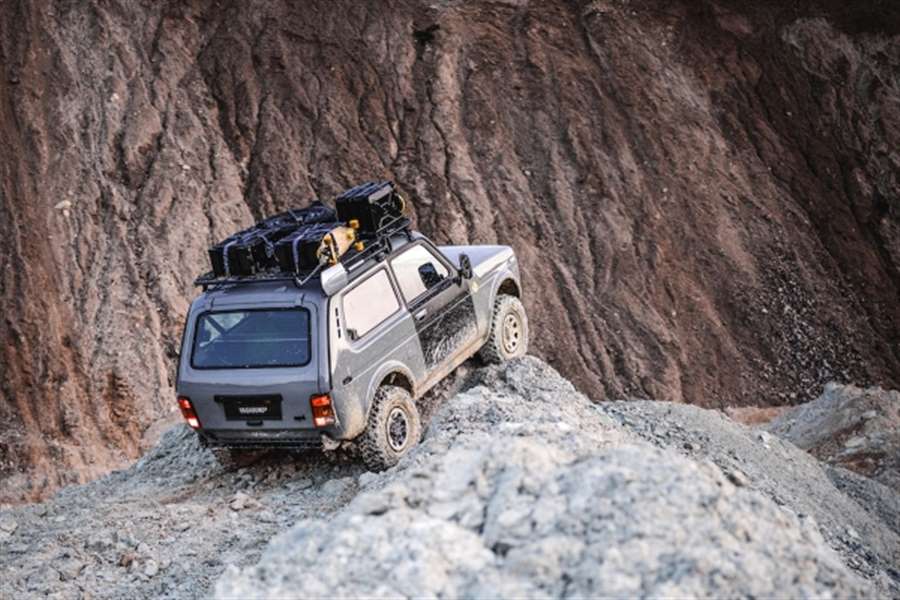
While this is the company’s first specially designed car ever, after numerous two-wheeler projects completed so far, it will definitely not be the last, with a focus on individual plans that belong to the future and are tied to models like the Land Rover Defender or Toyota Land Cruiser.
Vauxhall Insignia hatchback review
"The latest Vauxhall Insignia is sharper to look at and drive, while offering lots of equipment for the price"
The Vauxhall Insignia targets the very best family cars on sale and in many ways it betters them. This alone should make it a hit for Vauxhall but it still faces lots of competition – and not just from its own class.
A facelift in early 2021 gave the Insignia a midlife refresh and saw the ‘Grand Sport’ part of the name dropped. The model line-up was simplified and a tweaked range of engines and upgraded technology was introduced in an attempt to keep the Insignia competitive with rivals like the Ford Mondeo, Peugeot 508 and Skoda Superb.
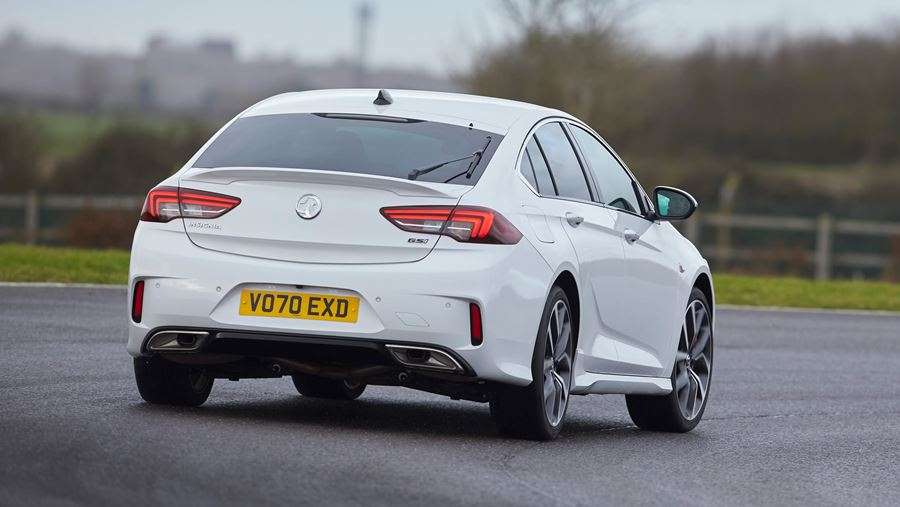
Best family cars
Cars like the Insignia and the Mondeo have fallen out of favour in recent years, with buyers instead opting for more upmarket models like the Audi A4, BMW 3 Series and Mercedes C-Class. This has led sales of more mainstream large family cars to dwindle, with brands like Nissan, Renault and Citroen discontinuing their models in this segment altogether. Instead manufacturers have turned to crossovers and SUVs, with models like the Nissan Qashqai, Ford Kuga, SEAT Ateca and Skoda Karoq hoovering up customers.
Despite these changing trends, the latest Insignia is an accomplished car. It’s lighter than its predecessor and costs far less to buy than some rivals. For such a practical car, it’s certainly keenly priced and Vauxhall offers it with a decent choice of turbocharged petrol and diesel engines. However, the lack of a hybrid powertrain in the Insignia line-up is noticeable, with rivals such as the Mondeo, Passat, 508 and Superb all boasting a hybrid or plug-in hybrid engine option. While Vauxhall has yet to officially confirm, it’s thought the petrol/electric powertrain from the Grandland X PHEV will make it into the Insignia in the future.
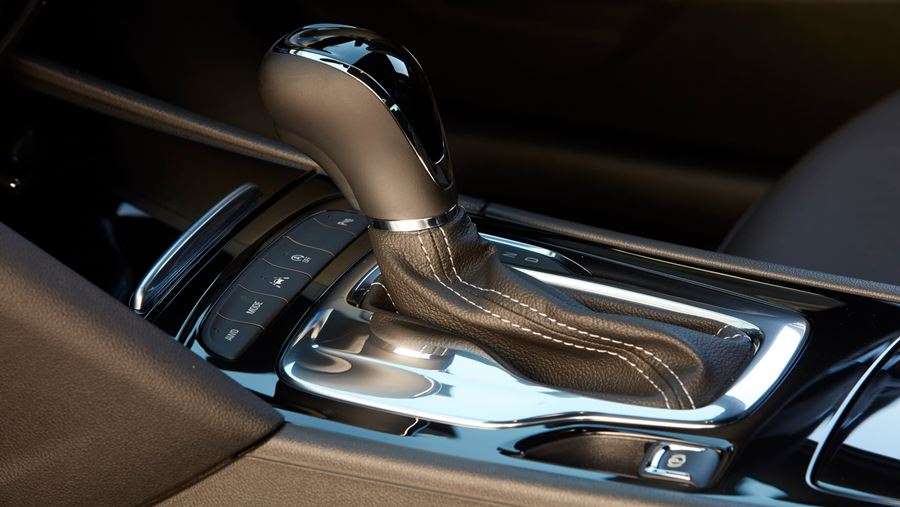
You can also count a full roster of safety kit and handy Apple CarPlay and Android Auto smartphone connectivity among the car's attributes.
Diesel engines have traditionally been popular in cars of this size and the entry-level 120bhp 1.5-litre three-cylinder is very capable, officially managing over 60mpg when matched with a manual gearbox. Performance is also decent, with 0-62mph taking 10.7 seconds. The more powerful 172bhp 2.0-litre four-cylinder diesel is available from the SRi Nav trim level upwards, making it considerably more expensive to buy. It's also capable of over 60mpg, and offers better performance, taking 8.2 seconds to get from 0-62mph.
Vauxhall’s 2.0-litre engine is best suited to drivers who don’t have high annual mileages. Both engines are fitted with a nine-speed automatic gearbox, and the 197bhp version is only available from the SRi VX-Line Nav trim upwards, making it a costly proposition at nearly £35,000. Above this is the 227bhp engine, which is exclusive to the flagship GSi model. It gets an advanced four-wheel drive system and a long equipment list but pushes the starting price to over £40,000. Both versions of the petrol Insignia manage 0-62mph in around seven seconds, with claimed fuel economy of 30-37mpg.
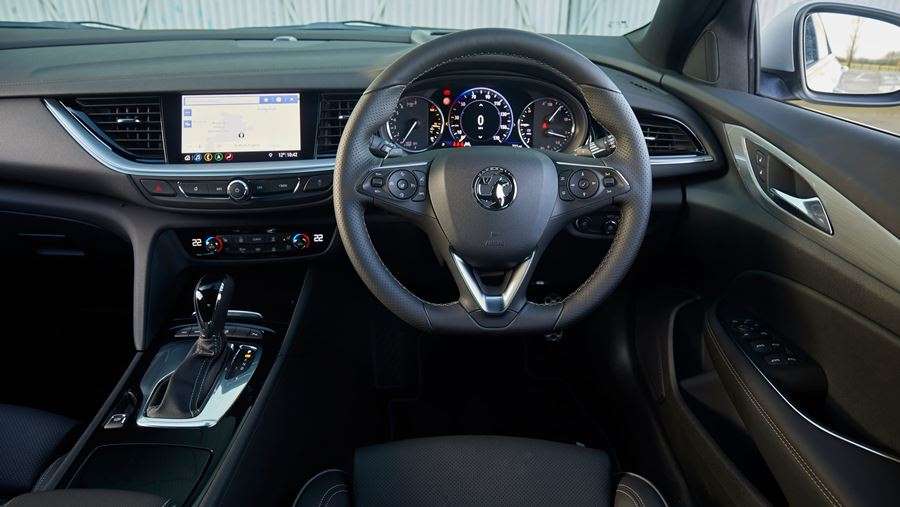
Approaching the Insignia, it’s immediately apparent that this is a big car. It’s only 4cm shorter than the latest BMW 5 Series from the class above, and is a similar width as well. It’s also a very low car; Vauxhall has dropped the driving position by three centimetres compared to the outgoing Insignia.
The low-slung design gives it a direct sense of connection with the road, which is matched by the overall driving experience. The steering is nicely weighted and communicates what’s going at the wheels, the suspension firmness is well-judged and you get a strong sense that the lessons learned from the latest, sharp-handling Vauxhall Astra have been passed on to the larger Insignia. Among front-wheel-drive rivals, though, the latest Skoda Superb feels a little sharper to drive, while the rear-drive BMW 3 Series remains the handling champ.
The Insignia’s significant stature means interior space is excellent in general, with huge amounts of legroom – front and back – and a well-shaped boot. Rear headroom is a little tight thanks to that low profile, however, and while the Insignia may come close to matching the cavernous Skoda Superb for interior space, the Superb’s greater height means its back seats are more comfortable for taller adults.
Vauxhall now offers five trim levels with the Insignia, but even entry-level SE Nav cars come with LED headlights and high-beam assist, all-round parking sensors, cruise control, a leather steering wheel and a seven-inch infotainment touchscreen, complete with sat nav, Bluetooth, Apple CarPlay and DAB radio. Moving up through the range adds extras like a larger touchscreen, a Bose premium stereo system, a rear spoiler, automatic wipers and upgraded interior trim details; top-spec Ultimate Nav and sporty GSi Nav cars come with Intellilux LED Pixel headlights and leather seats.

The pre-facelift version of the Insignia achieved the full five stars in Euro NCAP’s independent safety assessments, helped by the standard fitment of lane-keeping assistance and an autonomous emergency braking system that works at urban speeds.
Vauxhall Insignia hatchback - MPG, running costs & CO2
Strong fuel economy, reasonable company-car rates and a vast dealer network make the Vauxhall Insignia cheap to run and easy to live with
Cars are products that – in general terms – are hugely improved with every update. The Vauxhall Insignia is an excellent example of this upward trend. It’s lighter than the previous generation and its engines are more efficient, which means it’ll be cheap to run. It’s also, somehow, far less expensive to buy than the old Insignia, and undercuts rivals like the Passat and Superb by a considerable margin.
Vauxhall Insignia MPG & CO2
Company-car tax is likely to be the make-or-break point for the Insignia, as the vast majority of sales will go to fleet buyers; the news here is excellent.
Because tax obligations for company users are determined by the car’s price combined with its CO2 emissions, the Insignia’s low list price works in its favour. The Insignia engine with the lowest CO2 emissions – the 120bhp three-cylinder turbocharged 1.5-litre diesel - is capable of 61.4mpg while emitting 122-144g/km, making it a decent choice for company-car drivers thanks to a mid-range BiK rating. Every facelifted diesel Insignia is now RDE2 compliant, meaning they are exempt from the additional 4% Benefit-in-Kind (BiK) surcharge.
The Volkswagen Passat and Skoda Superb are available with standard petrol and diesel engines that occupy similar BiK brackets, with their respective plug-in hybrid models sitting in lower BiK bandings. However, both of these rivals' list prices are significantly higher than the Insignia’s, with the PHEV versions costing a third or more to buy at least.
Insignia buyers get a choice of two petrol engines and both are equipped with a nine-speed automatic gearbox. The 197bhp 2.0-litre petrol officially returns 33.1-37.7mpg, while the 227bhp version, which is reserved for the range-topping four-wheel drive GSi model, is almost as efficient, managing between 30.3mpg up to 35.3mpg. Emissions for the petrol engines range from 167g/km to 200g/km, placing them in the upper BiK bandings for company-car drivers.
An entry-level 143bhp 1.4-litre petrol is expected to join the line-up later this year and be capable of around 45mpg. A hybrid model is also expected to arrive, which is likely to borrow the 1.6-litre petrol engine and electric motor used in the Grandland X PHEV.
The diesel engine pairing offers far greater efficiency, with the entry-level 1.5-litre three-cylinder capable of 61.4mpg when equipped with a manual gearbox. Go for the automatic box, and economy falls to 56.5mpg. Emissions range from 121-145g/km for the manual, rising to 130-150g/km for the auto depending on the wheels and specification chosen.
According to Vauxhall, opting for the 2.0-litre four-cylinder diesel engine delivers identical fuel economy, with the manual capable of 61.4mpg, which falls to 56.5mpg when you opt for an auto. Emissions range from 121g/km for the most basic version with a manual gearbox, rising to 149g/km for a higher trim model with an automatic.
One word of warning: if the facelifted Insignia is like its predecessor, expect secondhand values to be somewhat unimpressive – although this won’t be of concern to company-car customers.
Every version of the Insignia will cost £150 a year in road tax, but if you go for the top of the range sporty GSi model, you’ll find yourself over the £40,000 barrier and liable for an additional £325 a year in VED.
Insurance group
The 1.5-litre entry-level diesel Insignia with 120bhp starts in group 17, while the 2.0-litre 172bhp version sits six places higher in group 23. The 197bhp petrol, meanwhile, starts from group 27, with the range-topping 227bhp GSi model placed in group 30.
Warranty
Vauxhall’s three-year/60,000-mile warranty is average and nowhere near as generous as the five-year guarantees offered by Hyundai and Toyota, nor the seven-year policy provided by Kia.
Servicing
The Insignia requires servicing every 20,000 miles or once a year, whichever comes first, and Vauxhall’s fixed-price servicing packages and maintenance jobs should make taking care of the Insignia an easy and reasonably affordable process. Vauxhall Care costs around £20 per month, including three services, three years of roadside assistance and the first MOT.
Source: carbuyer.co.uk
Top 5: road cars signed by Cosworth
Often in the world of cars, a story is repeated that begins something like this: "When you and those characters started this or that year, they didn't even know that…".
Well, this story won't start like that, because the brilliant minds in front of Cosworth foresaw the future very well and knew even better what they were doing. And this thesis is shown by these road cars with their signatures.
So here is a brief cross-section of the best that this ingenious duo has offered for road use…
There is no doubt that Mike Costlin and Keith Duckworth have become immortal since 1958. There is also no doubt that the engines and other components of this ingenious duo have been revered by millions of Ford fans and beyond over the years. Because what Cosworth has achieved in the world of engine optimization, refinement, performance increase and construction of legendary race cars, practically no one has ever managed to achieve.
Having Ford, Mercedes-Benz, Audi, and even a Cosworth-signed Subaru in my possession has always been something special. And the owners of various Sierra, Escort and other other cars were rightly proud of their cars.
Because Cosworth, despite all its flaws (and there were some), has always fascinated with its ingenious solutions, crazy ideas and revolutionary machines that power some of the most respected cars of all time.
Both on the street and on the track.
True car enthusiasts, whose coexistence with cars does not come down to blind worship of one brand or worse, one model of one brand, know very well what this legendary company has signed from 1958 until today.
But some of you esteemed readers might be surprised with our selection as part of Cosworth’s list of the best road races.
So there is no choice but to start with this short and sweet list of really special road races with Cosworth's signature…
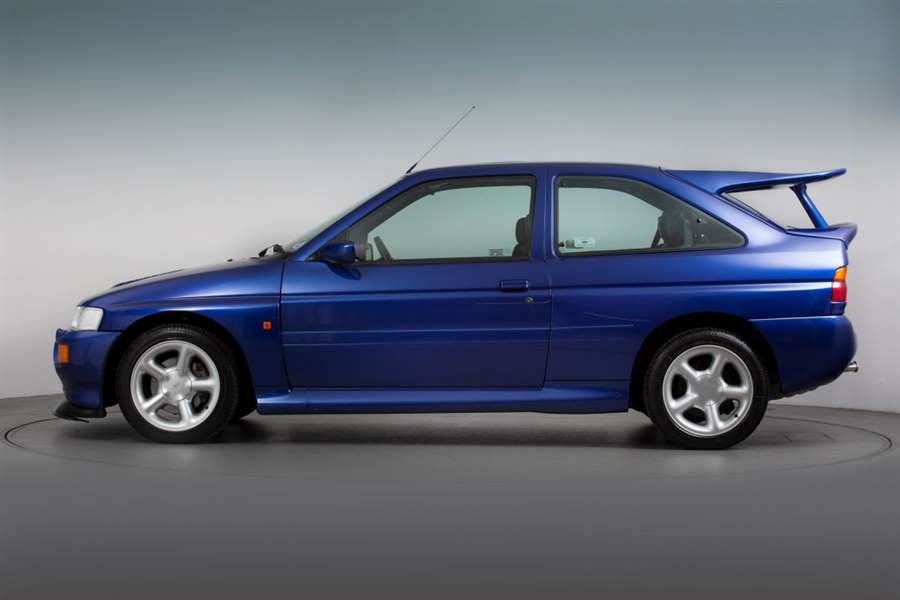
Number 5: Ford Escort RS Cosworth
"Cossie"… "Cossack"… "Escort on steroids"… Indeed, this car has certainly been called by car enthusiasts over the years.
But all these names, adjectives, suffixes and slang names have one common denominator. And that comes down to one of the most special angry compacts of all time.
For many, this car marked an entire era of racing on the dirty and dusty tracks of the World Rally Championship.
For many, the RS Cosworth was the "car" that made them indulge in the world of cars in their entirety.
Many also swear by the absolute superiority of this Escort compared to the competition from that wonderful time.
And maybe all those many are right, but Ford with this car in its road edition did not intend to break any records, nor was it expected that this icon from the nineties and a few decades later would be adored by a huge amount of people.
The idea was to accomplish the series needed to comply with the homologation rules and that’s usually it.
But despite this, the Escort RS Cosworth still stands on the pedestal of the most special cars of all time - although through some figures, the wickedly high price and often questionable durability may not deserve it.
The Cossie, with its body just like an ordinary Escort, looked like a neighborhood hooligan.
His character was like the once famous movie diva whose alcohol drank his brain and reflexes, while due to frequent breakdowns, this Ford fell out of the car, which caused its owners to go bald unplanned.
But the two-liter engine with its 227 horsepower and all-wheel drive was absolutely fascinating even with a Turbo-hole the size of a Marianas furrow.
And then there’s that ingenious and equally oversized spoiler on which laundry could be dried.
Basically, if there is an icon on four wheels in the world that can be recognized from any angle, then it is precisely the Escort RS Cosworth.
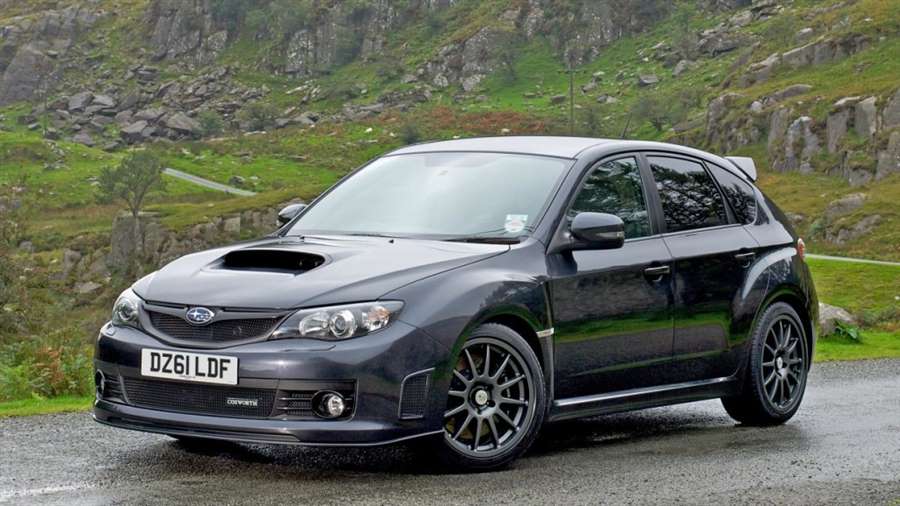
Number 4: Subaru Impreza WRX STi CS400
Yes… Cosworth had his fingers in this legendary Japanese car as well. And you may not have known it, but it still doesn’t negate that fact, because this car really did carry Cosworth’s signature.
The idea was simple: to produce something really special and thus at least partially try to annul all the negative reactions that Impreza GR was collecting even in its strongest version.
Because the Impreza has always been a sedan, while the third generation of this model is presented in the form of a compact with five doors.
And yes… This Impreza was as disgusting to watch as it was shocking to comprehend. Therefore, Subaru struggled in all possible and impossible ways with various variations on the special editions of this body version for the Impreza, before the definitive capitulation and the release of the sedan (GV) version on the market.
But before that happened, for many the ultimate Impreza of the time
the woman was created in collaboration with Cosworth.
Basically, the ugly compact still wore vulgar spoilers and a design signed by the correctional team from the subject "design and engineering". I guess that’s why the focus this time was definitely shifted under the hood under which Subaru’s heart was pounding with Cosworth’s pacemaker.
The four-cylinder, 2.5-liter engine at Cosworth is disassembled into "simple factors" and then rearranged from start to finish. And the resulting condition was shaped into an EJ257 engine with almost 400 horsepower.
With those 400 horsepower combined with a billion minor and minor minor revisions to the chassis, suspension, and powertrain and braking system, the Impreza WRX STi CS400 accelerated to 100 km / h in 3.7 seconds. That is, in translation more convincing than some five times more expensive super-cars of that time.
But despite this, this very interesting project was very quickly doomed. Because the price of £ 50,000 in the UK was simply exorbitant.
Either way, Cosworth has turned this Impreza from an ugly duckling into a dark object of desire for many.
And that’s actually quite enough to say as a conclusion about this car.
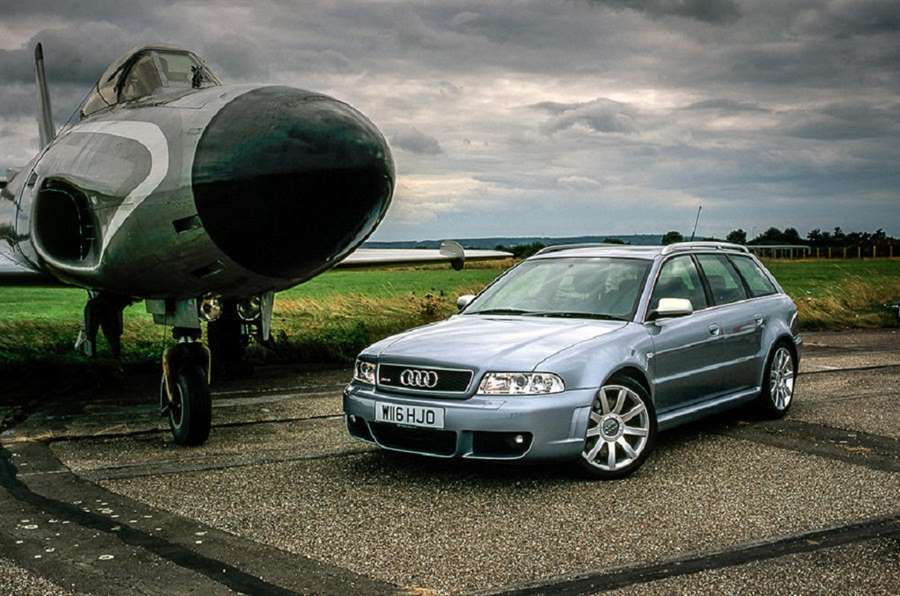
Number 3: Audi RS4 (B5)
Admit that you had no idea that Cosworth was also fiddling with this mobile box from Ingolstadt.
But admit it or not, history confirms that Audi without Cosworth would never have presented the successor to the legendary RS2 - at least not in the form in which we know it and with which we are fascinated.
Now… You must be wondering how this somewhat obscure collaboration actually came about.
So here is the answer to that question…
Namely, as Cosworth as a company was on the verge of bankruptcy in the late 1990s, at one point the idea was born to split the company into two parts. The newly formed divisions were oriented separately towards road cars and those with which the team raced along the track.
In those years, Audi persistently tried to create a successor to the legendary RS2, so instead of cooperating with Cosworth, it simply decided to buy the road division of that company and throw the employees into the fire. And look at the miracles - it turned out great.
Because on the one hand Cosworth did not put the key in the lock forever, while on the other hand Audi produced one of the most special models of all time. And a model with a coat of arms.
Many swear that the first RS4 is also the last real Audi with the correct pedigree and without unnecessary marketing nonsense. Because this caravan already looked serious with its appearance, while driving it was able to embarrass many times more expensive, nominally faster and much more famous super-sports cars on the planet - by driving kids to school and Labradors to the toilet.
The 2.7-liter V6 engine was already a respectable force on the road. And after Cosworth's interventions on the engine in question (especially on the pistons and the exhaust system) with its 380 horses, this really became one of those cars that made the "haters" of the caravan want to have one in the yard.
acceleration to 100 km / h took less than 4 seconds, while top speed was limited to the agreed 250 kilometers per hour in Germany.
So even though I guess megalomaniacs and number addicts will say the proverbial "meh" and wave their hands, the Audi RS4 still remains one of the most brutal family cars the world has ever seen.
And without Cosworth, all this would not be possible.
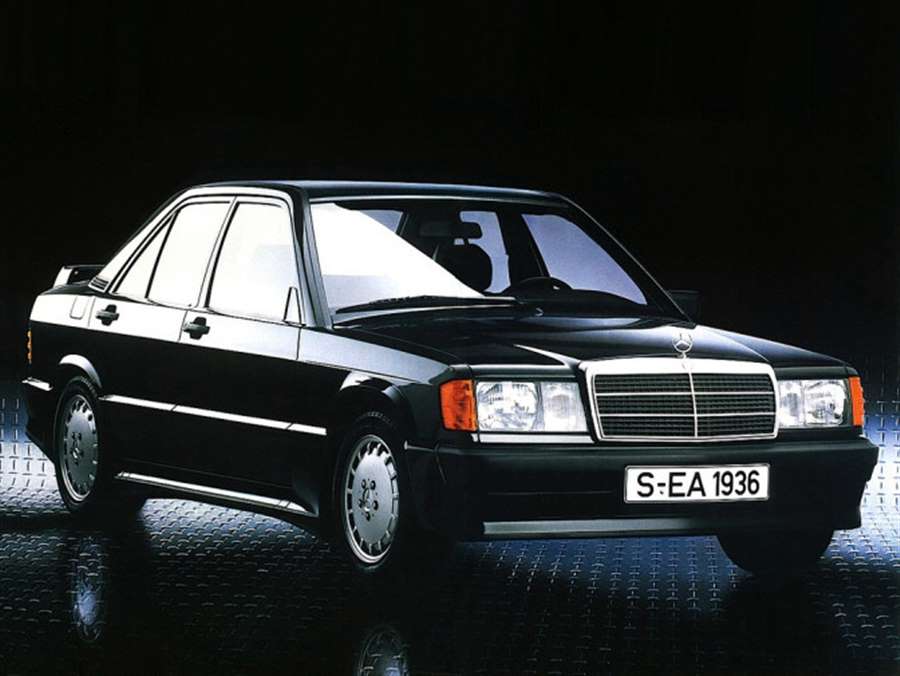
Number 2: Mercedes-Benz 190E 2.3-16
That by any chance AMG was an official part of Mercedes' three-spoke empire, and that in 1983 the company's employees had the time, will and desire, who knows what the story of this car would look like.
But as AMG was not part of Mercedes' three-legged empire at the time, and as the company's employees were on a cigarette-two break just then, Mercedes-Benz dared to start a partnership with Cosworth.
And the result state was shaped into one title title as part of the DTM competition from the early 1990s, and countless victories during the seasons that preceded that success.
But before that, this seemingly ridiculous fruit of collaboration between crazy Englishmen and anal-precise Germans also set several world records, including the one of 50,000 kilometers traveled in one piece and at a (combined) speed of almost 250 kilometers per hour. And without any malfunctions, without a general breakdown of the system and without any service interventions.
So, here is an example that confirms that Cosworth can really put his signature on something permanent and high quality, so the critics of this Mercedes derivative of the 190 and the collaboration with Cosworth were soon (and forever) gagged.
Mercedes-Benz 190 E 2.3-16 nowadays has a cult status. And deservedly so. Because from those times until today, it is not a common case for a company to present a car that is so close to the "ordinary" version, and at the same time stands fourteen light years away from it.
Because despite the fact that the 190 with its 185 horses and Cosworth's signature is not even the fastest limousine of its time, at the same time it clearly showed that it is one of the most special limousines of all time.
And by all accounts, it will remain so.
And rightly so.
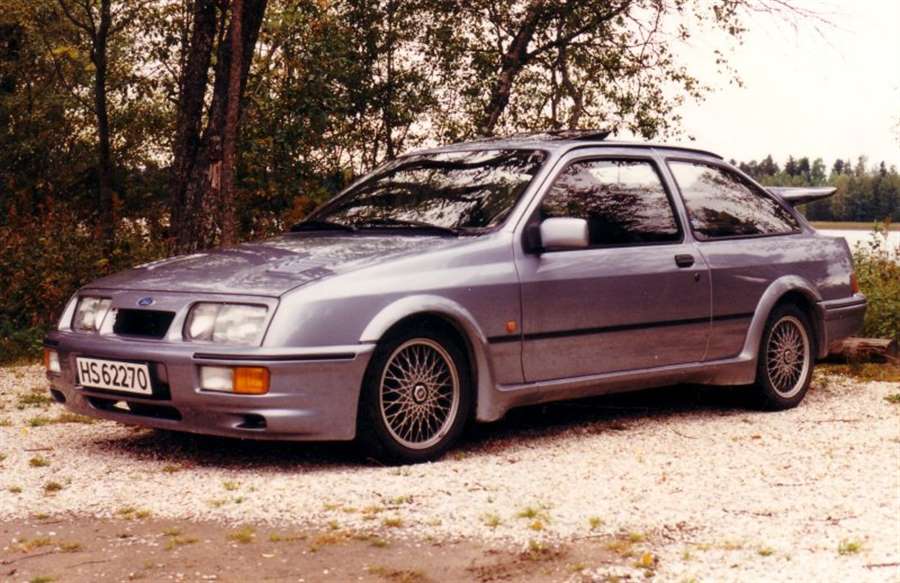
Number 1: Ford Sierra RS500 Cosworth
"As it was in the beginning, so it is now."
Because Sierra in this version with Cosworth’s signature literally kicked her ass wherever she appeared.
Europe has submitted to this Sierra several times and in several different domains of motorsport.
Australia too, and in the US and Japan this Sierra has earned an extremely high rating.
In a world of dust and dirt, Sierra has raised some of the best drivers of all time, of whom perhaps best to highlight is the legendary aggressor named Colin McRae.
The pedigree itself was present from some already past times in which Cosworth together with Ford played with several generations of Escort RS, so Sierra "only" continued that story. But the most special part of the "story" about the Sierra RS500 Cosworth was recorded on the street, ie among the "ordinary" people. Because it is in this segment that this car, despite a kind of handicap compared to competitors such as the BMW M3 (E30) and Audi UrQuattro, turned out to be a moral winner.
Namely, while Audi sold its UrQuattro in micron series and at the prices of preserved kidneys on the black market, and BMW moved the produced copies from garage to garage due to the lack of produced M-three models, Ford provided a larger production series for the Sierra RS Cosworth.
And with that, the Sierra took over the roads because of its accessibility, so it soon gained the status of a national hero in England. And that status holds to this day, when some of the preserved specimens at auctions record six-digit figures. And the version marked RS500 with its 500 produced copies only added that obligatory factor of exclusivity for this already loved and desired car.
The body extensions and the oversized rear spoiler from this uncompromising car certainly made a different beast than the ones moms, dads and taxi drivers rode on a daily basis. Although some still resent that the two-liter engine never got more than 227 horsepower, this is still the Sierra, which to this day is the alpha and omega for all those for whom the "fast Ford" is the ideal in the world of cars.
Ford produced a legend with this car, while Cosworth gave that legend a truly special beast with the character of an absolute savage. Ie. one of those cars that only the most capable behind the wheel could deal with in the right way.
And that’s why it’s the best road car Cosworth has ever put its signature on.
Do you agree?

